Brand guideline examples and tips to make your own
Do you want your brand to stand out in a competitive climate? If so, brand guidelines play an important role and are essential for your brand to be successful. Having brand guidelines or a brand style guide ensures your brand maintains its integrity whilst being distinctive and recognisable.
All of the best brands you've learned to love have brand guidelines they follow. Some might be more thorough than others, but either way, there are guidelines in place. That's why they are so successful, well-known and instantly recognisable.
In this comprehensive guide, we'll explore what brand style guides are, what brand guidelines include and how you can create brand style guidelines for your brand.
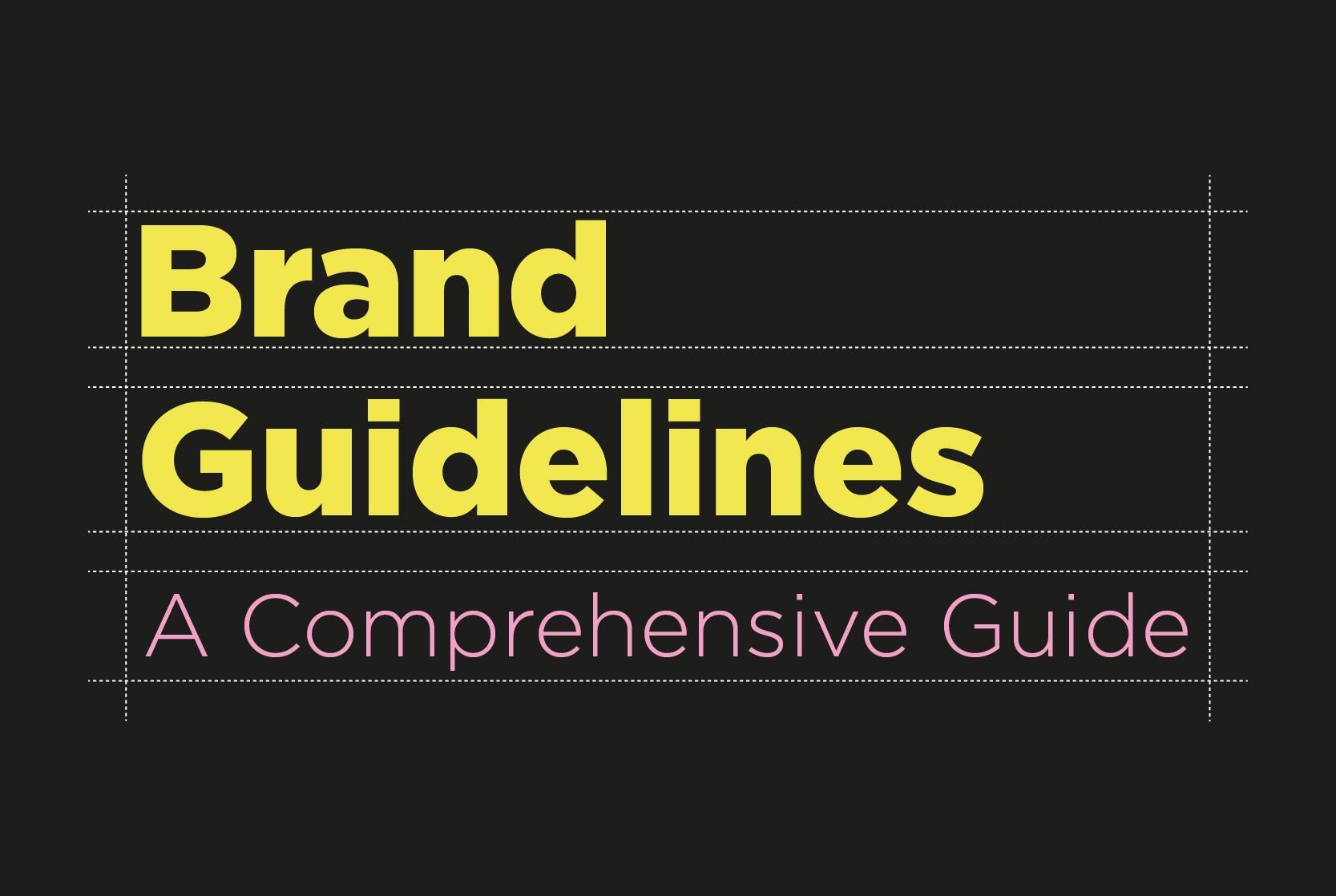
Firstly, what are brand guidelines?
You might see them as brand guidelines, brand identity guidelines, branding guidelines, a brand manual or a brand style guide - they all mean the same thing!
But, what exactly are they?
Brand guidelines are a clear set of rules that demonstrate your brand story and how your brand image should be presented.
These brand guidelines usually come in the form of a brand style guide or brand book which displays your brand assets, brand colours, brand voice, overall brand consistency and other important brand elements.
Why are brand guidelines important and how can they help your brand?
All the combined elements of your brand are evaluated and subconsciously taken in by consumers. The brand you present is what's going to make your business memorable and likeable, so you better have a strong understanding of how to portray that brand accurately.
Branding guidelines help produce a strong brand identity
Brand guidelines are highly necessary because, without them, your brand personality can become muddled and confusing.
Creating a brand style guide defines your brand story and brand voice whilst avoiding any miscommunication with your target audience. The last thing you want is to send out the wrong message.
A brand style guide can help form brand trust
Building brand guidelines forms a strong visual identity which builds trust with both current customers and new ones.
A customer is much more likely to choose a business that is on-brand and has a strong visual identity, compared to a company with no effective brand guidelines. Having a complete brand style guide shows quality which is acknowledged by your customers.
Increase new acquisitions and retain existing customers with brand identity guidelines
Composing a solid brand style guide will help maintain your brand messaging, which, in turn, will help retain customers and form new customers for your brand. Brand guidelines are a brand's 'behind-the-scenes' way of making a good impression. The messaging that is projected from your brand will either resonate with your target audience, making your brand memorable and actionable, or it will not.
Brand guidelines make your business run faster
A clear set of brand guidelines act as a great tool for you and your team. A brand style guide guarantees your employees know exactly how your brand works and what they should include in any brand marketing materials.
If everyone knows how your brand should be represented and sticks to the brand guidelines, there is less time needed for approval and explaining the brand elements.
All in all, having a solid set of brand guidelines ensures everything that is created in-house is on brand.
Get our brand guideline workbook for free!
Getting started with your brand guidelines
Whether you're an existing brand or a new brand starting from scratch, there are a few essential elements you need to define before you get started on creating your brand guidelines.
Firstly is your company name. This may seem like one of the more obvious core elements, however, some businesses fail from the start because their brand name isn't quite right for their business sector.
You need to ensure your brand name lines up with your brand values and mission (we'll explore what these mean soon).
If you aren't sure where to start with naming your business, it's worth getting in touch with a branding agency (like JUMP) who can help you kick-start your business success.
Defining your brand's target audience
Once you're clear on your company name, you need to figure out who your ideal customer is so your brand target audience is crystal clear. Ask yourself questions such as 'who am I trying to reach?' or 'who do I want to buy my product/service?'. You could even consider creating a buyer persona or mood board to help visualise your brand audience.
Below is an example of some customer personas JUMP created for our client Port of Tyne - one of the UK's most innovative deep-sea ports.

Every great brand has a reason for existing
Another element you should consider when creating brand guidelines is clarity on what your brand does and what your company stands for. There's no point having a fancy logo and a name for your brand if it doesn't line up with who your brand is and what your brand believes in.
Your brand and its mission
If you haven't already, it's worth coming up with your brand's overarching mission statement.
Your brand mission should sum up everything your brand does in one phrase or sentence. This should state who your brand is and what your brand is hoping to achieve from selling its products or services. All in all, your mission is why your brand exists in the first place. There are plenty of examples out there, but here is JUMP's mission for reference:
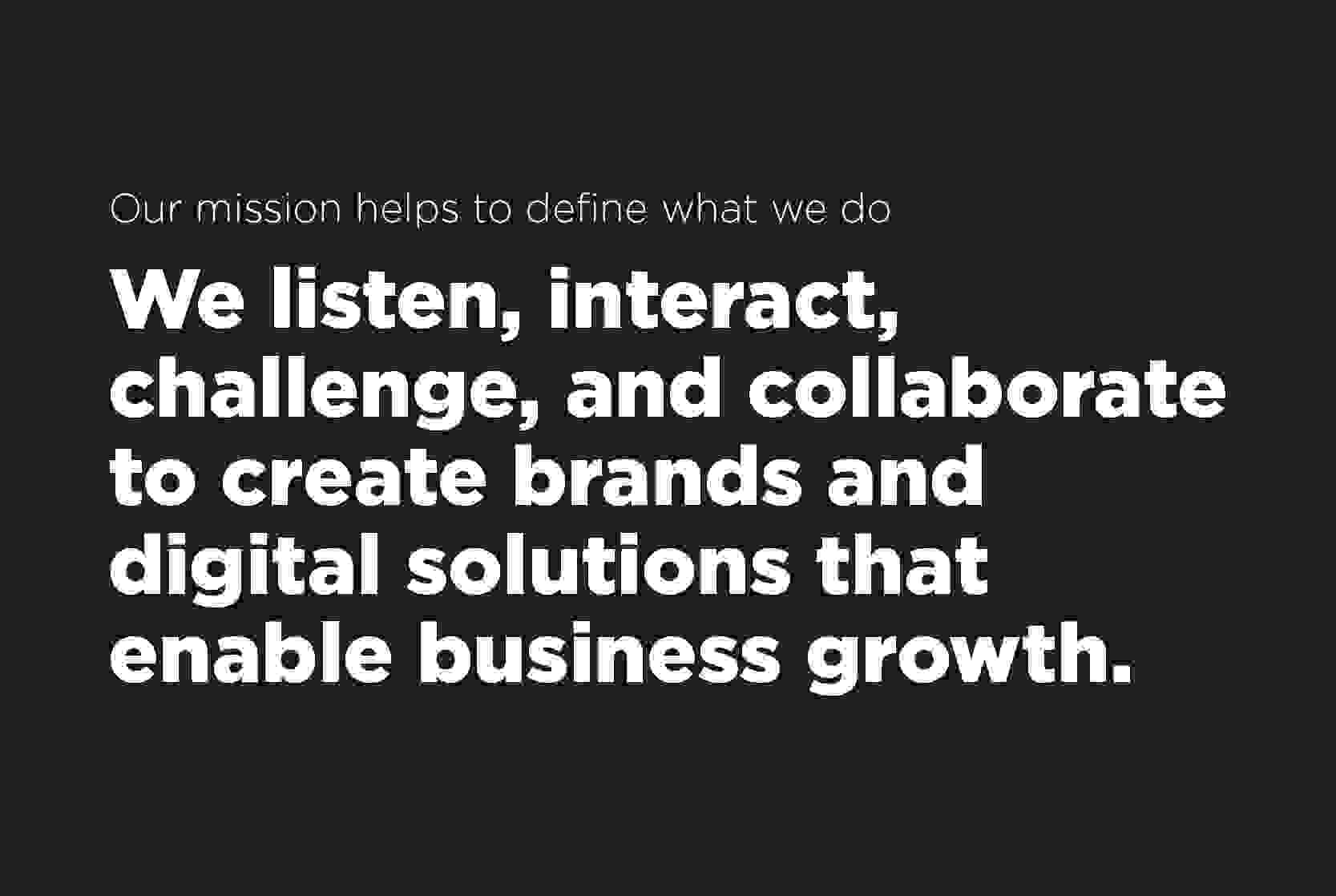
Bonus! You can create a great tagline for your brand
Your mission statement can be the perfect tagline to use across your marketing channels. Whether it be on your website or social media, your mission statement can be added to bios, leaflets or any other marketing materials you desire. This then has a knock-on effect by automatically showing brand consistency and accumulating trust with customers.
Plus, if your brand is designed to stand out or be ambitious, having this branding repeated across multiple touch points in the customer journey of interacting with your brand, will make your brand come to the forefront of their mind more often.
Your brand and its core values
Much like the importance of having a brand mission, the foundations for your brand should also include brand values.
An easy way to establish these values is by asking yourself or your employees questions. What are the aims of your brand? Are there certain core values that your brand tries to embody consistently? What do you want your brand to be known for doing? From the answers you accumulate, try choosing four or five principles that drive your company to succeed.
There are many concrete examples of great brand values online that you can take inspiration from. Below we have displayed our client 3RTSH's values for some inspiration.

Establishing your brand's voice
You might have heard about brand voice and tone of voice, but you might not be implementing a clear brand voice across your brand. Or, you might have an idea of your brand voice, but don't know how to articulate it into a something that everyone can follow and understand.
What is a brand voice?
Every company has a brand voice whether they think they do or not. Your brand voice defines how your audience sees you.
Think of your voice as your company's character and how you interact with your customers. Are you funny and laid back? Or is your company more formal and professional?
Overall, your brand and its tone of voice should reflect your values and how you want your company to be portrayed.
Creating a brand voice
Your voice must have a clear and consistent tone in order to retain your brand and its identity. Although this is the case most of the time, it may change across different platforms.
For example, Instagram is a relatively casual platform, so why not have a slightly more relaxed tone and use funny puns? LinkedIn however, is for professionals, so you may want to tone it down and use more specialist language.
Other factors may come into play, such as whether you refer to yourself as a 'we' or you consistently speak in the third person. This should all be made concrete from the start and added to your brand style guide. This way, no matter who joins your company, everyone is always on the same page.
Overall, it's your brand so you get to decide! Just bare in mind your business and whether what you're deciding on is suitable, efficient and consistent.
We help by assisting you in deciding what type of voice would work for your audience, as well as what's the most effective voice on different marketing channels.
Your brand's logo usage
Your company logo is crucial for establishing your brand's identity as it allows customers to quickly identify your brand. It may be you already have a logo that you're happy with, in which case great! Just make sure it's right for your brand's products or services.
Brand logos are one of the main branding elements used in your marketing materials so it's important the logo guidelines you set are simple yet maintain the integrity of your brand.
Logo manipulation and visibility
Your logo should remain coherent and legible on all platforms to provide maximum impact for your brand. There should be no variations of styling and the logo shouldn't be distorted in any way. Below is a good example of some logo brand guidelines we created for our client Green Baggage.
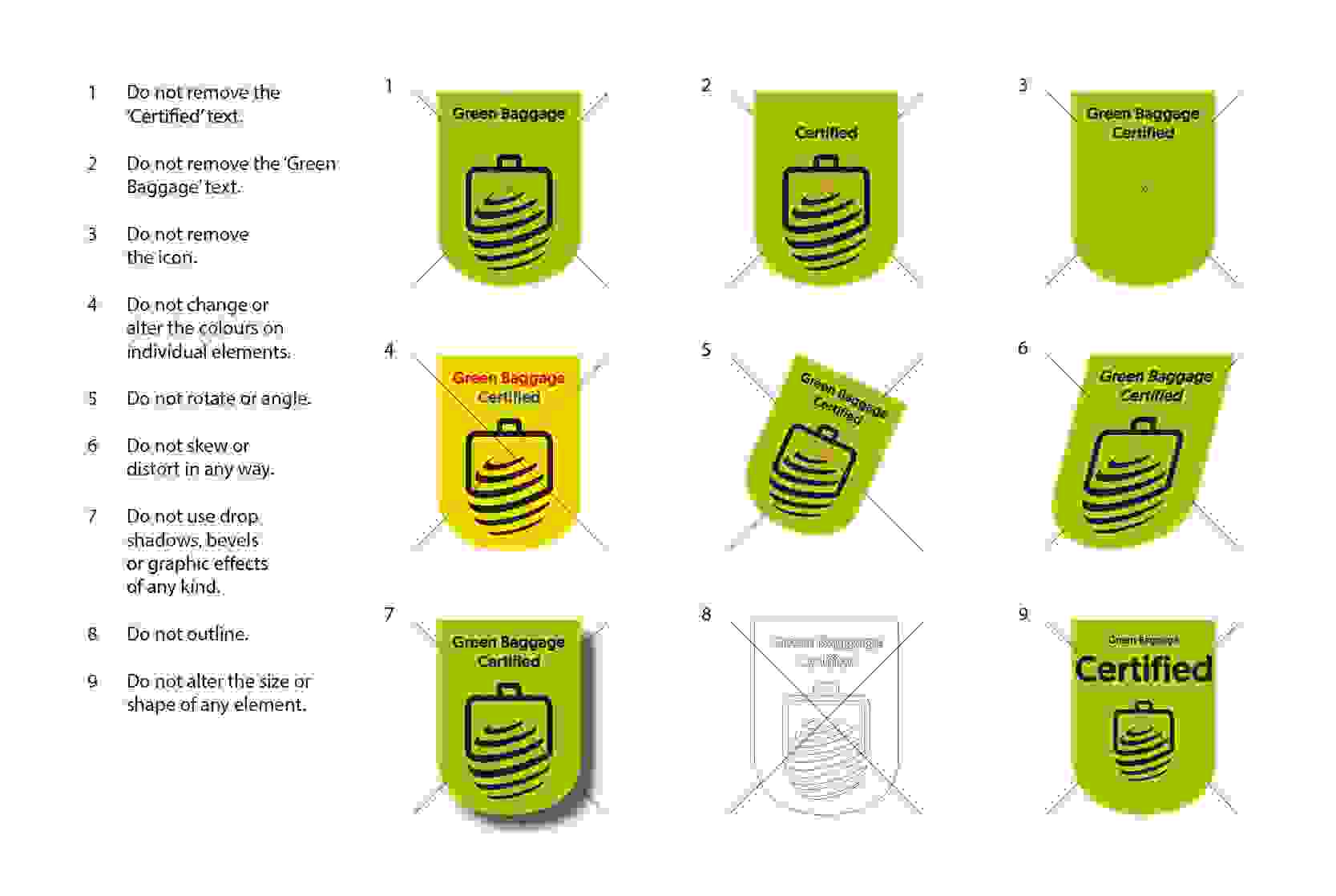
Primary and secondary logos
A brand will always have one main logo and colour that's used across most communications, however, it's a good idea to think about a more versatile colour palette when creating brand guidelines to ensure maximum visibility is reached. (We'll explore brand colours further on in this blog).
Here is an example of our client 3Dental's logo usage guidelines.
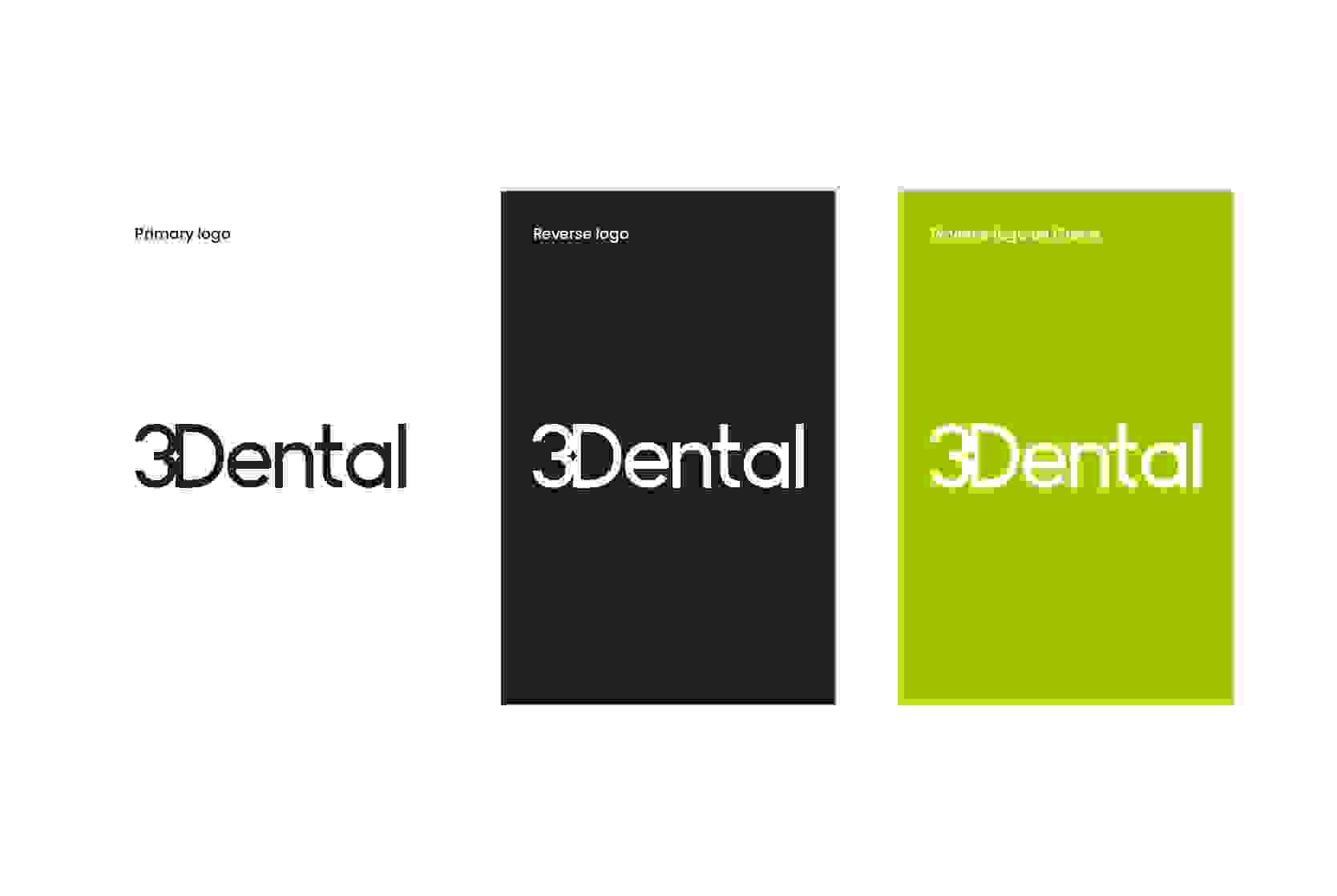
As you can see, 3Dental have a primary logo which is a dark grey font on a white background. This is to be used across most channels, however, there are another two options. One with a dark background, and one with a bright background. These can be referred to as either reverse or secondary logos, which are to be used when the primary logo isn't suitable.
Not only does the dual logo add value to your brand by providing on-brand options for variety, but it also helps with accessibility.
Using icons instead of text
It may be that on certain platforms (e.g. Instagram), you only have a small circle to work with when uploading your profile image. In this case, it might be worth creating an alternate logo that uses an icon rather than typography.
In the example below, we showcase our client Jan Forster whose primary logo is too long and wouldn't leave enough negative space around the font to be legible.
To solve this issue, JUMP created a selection of icon logos to be used across communication media that wouldn't look right with a longer form logo. These are displayed below.

Logo placement and minimum space
Another thing to consider when developing the brand guidelines for your logo is the minimum negative or white space your logo should have when used on any marketing materials.
Whether it be on your website or a promotional leaflet, the borders surrounding your logo should always be clear. This makes sure there's not too much distraction around your logo, allowing attention to be drawn to your brand.
Below is an example of a minimum space guide we created for our client Samepage.
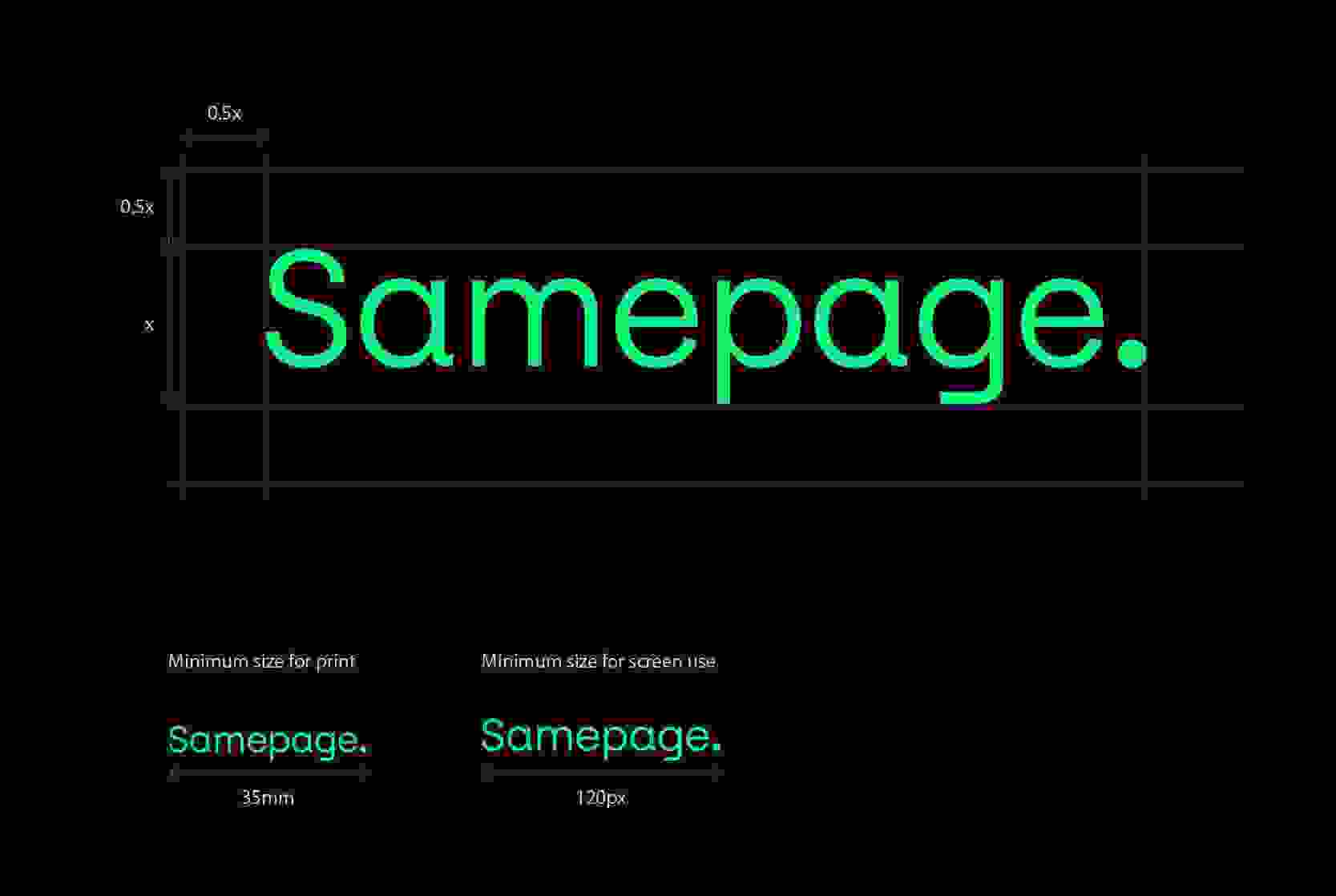
Choosing the right fonts
Fonts matter! There's no point in having a great logo and colour palette if the font styles you choose don't complement them. The fonts used across your marketing platforms should complement your brand and the logo you have chosen.
Here is an example of some fonts we used for our client 3RTSH.
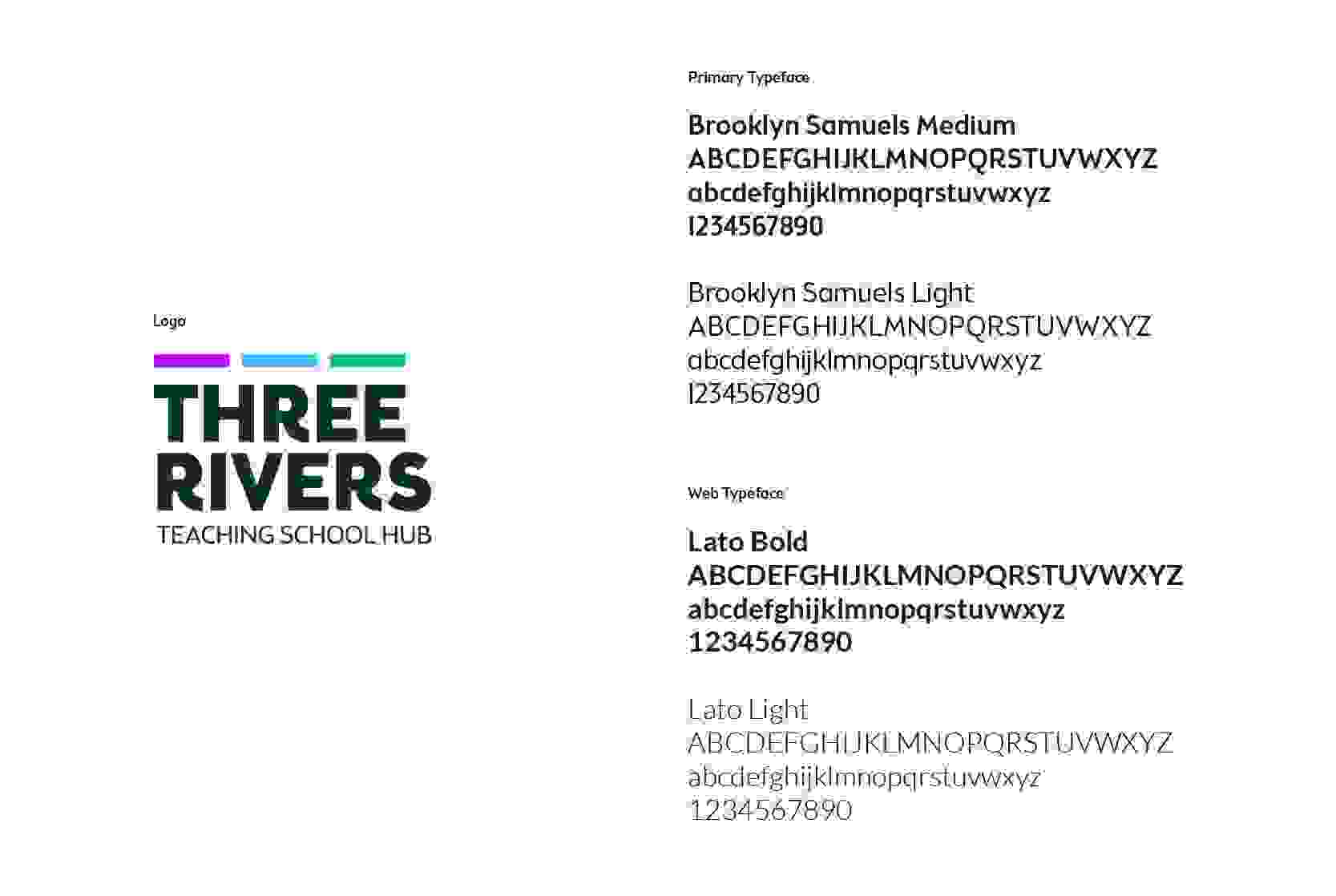
Choosing your colour palette
Colours are very important to consider when creating your brand guide, as they have such an impact on the customer's view of you and your business. They also have a huge impact on accessibility and general visibility, so make sure your colours are suitable for any relevant user interface when choosing your brand colour palette.
Colours evoke emotion
Below we've displayed an example of a colour chart, and the emotions each colour represents. Think about some of the logos you see on a regular basis and what emotion they are trying to evoke. You'll probably notice this more now that we've told you!
When you choose to work on your brand with JUMP, we take you through all the different ways you can use colour in your brand, and why you should be using them. Every decision made towards creating your brand (especially colours) has a reason behind it.
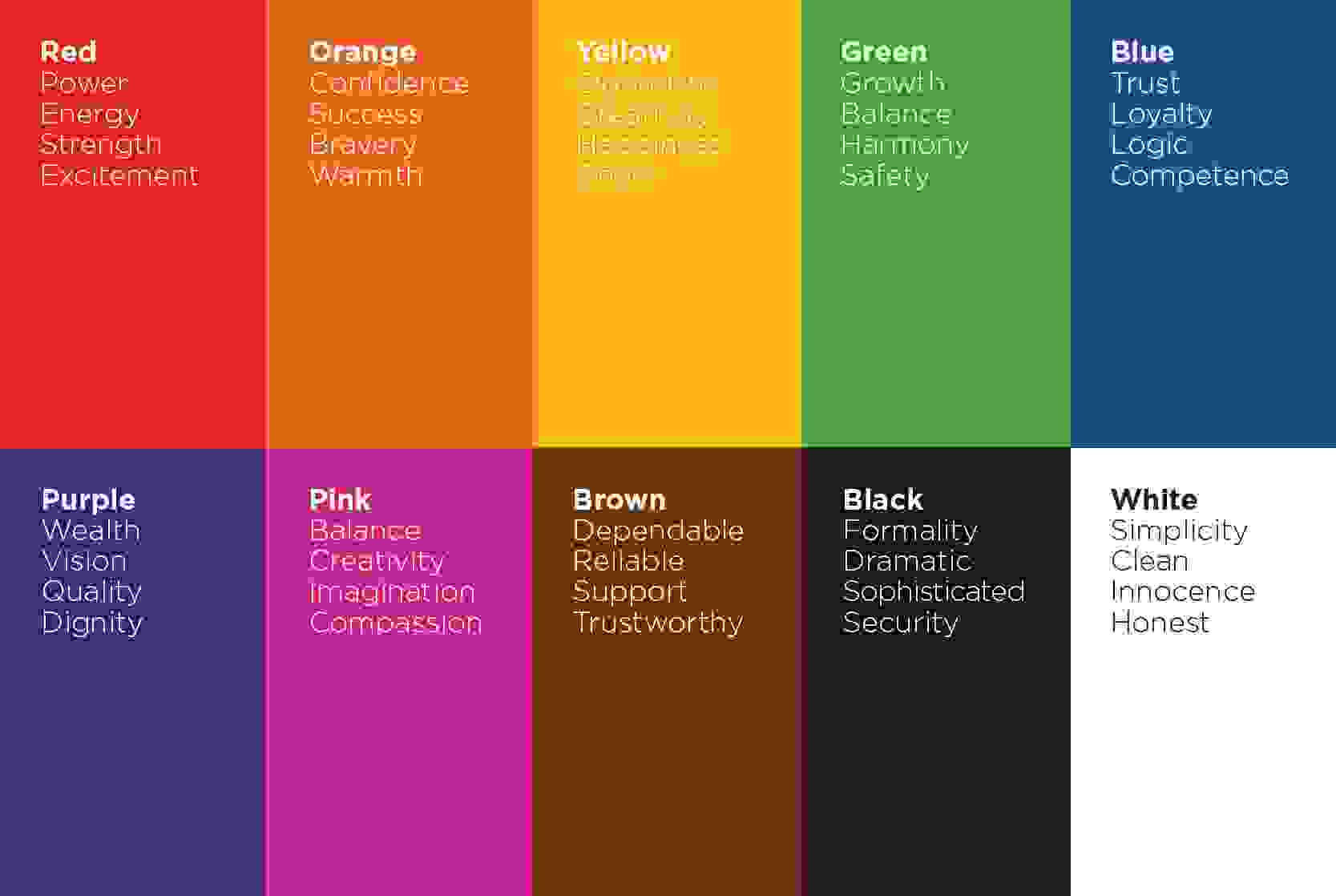
Ensuring your brand style guide colours are consistent
When choosing colours for your brand, you should always make sure they are consistent. For example, if you chose a certain green, you should make sure the same exact green is used every time. The last thing you want is for your brand to be using a bright neon green if you were originally intending to use a pale sage green.
You can make sure you're using the exact colours every time by noting down the CMYK codes or RGB colour codes (hex codes) and including them in your brand style guide. That way, in future, anyone can make sure they're using the correct colours!
Below is an example of a colour palette we created (complete with all the codes) for our client TOTIM.
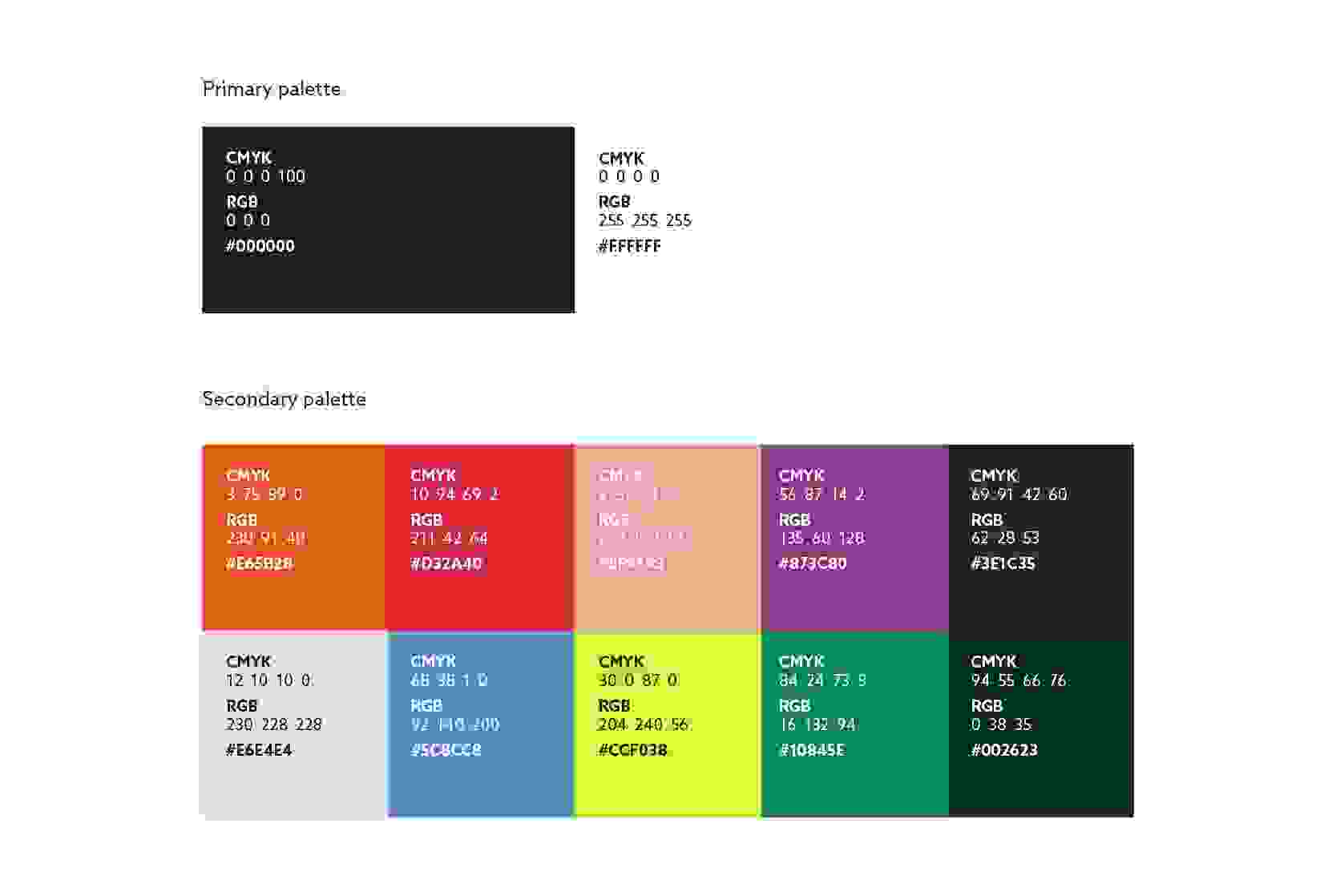
Your brand and its visual style
Every brand style guide should involve a clear visual style. From your logo to your colour palette, to your website and your social media, your visual brand elements should be consistent and recognisable.
Brand imagery
Part of your brand visual style should include imagery suited to your business and brand identity. Your brand style guide should include which kind of imagery to use. Should it be clean, professional photography with a light background and airy feel? Or should it be more dark, moody and highly edited? Again, this is something you need to decide but here is an example to help you...

Above are some brand guidelines we created for our client Helm, who are an experienced construction consultancy. This kind of business needs photography and imagery that complements their company's branding and what they do. Helm would appear unprofessional if they used low-quality images so it's important professional photography is used.
Graphic elements
Another thing to think about when creating a brand style guides is the kind of graphic style that will suit your brand identity. This should include digital elements of the brand, as well as any illustration style or other key design elements. Be sure to include a colour palette in this part of your brand guide too!
How can you create a brand style?
This blog is a good place to start! And although we think we've got you covered with this post, there are plenty brand guidelines examples out there. Check out other brands to give you an idea of where you should start!
Get our brand guideline workbook for free!
We can help you create a brand style guide
If you're looking to establish a memorable brand or want someone to help you with your brand strategy, look no further.
Our talented graphic designers and marketing team can help you by coming up with a brand guide, as well as creating content marketing and any other marketing materials your brand may need.
Let our creative team help you construct a great brand story by getting in touch.